Welcome Back to the Metalsmithing at Home Basic Tools Series.
Today we are going to discuss the second task on our list, Moving the Metal.
In the the Intro, we defined Metalsmithing as it pertains to the Jeweler’s Life and the making of Metal Jewelry.
We talked about the correlation between the tools we need and the Tasks required to accomplish the desired results and bring you project to life.
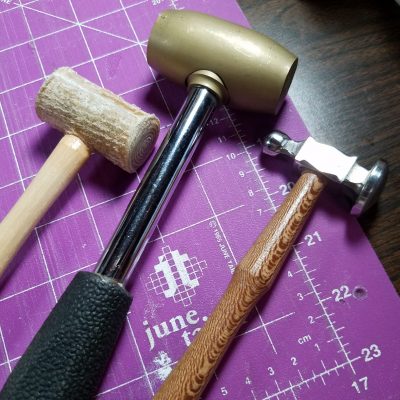
Metalsmithing Tasks
To Work with Metal you will need a way to :
- Cut the Metal – Sheet, Wire, Rod
- Move the Metal – Flatten, Harden, Straighten
- Form the Metal – Shape, Roll, Remove, Refine
- Connect the Metal – Solder, Fuse, Cold Connections, etc.
- Polish and Finish The Work

In the Metalsmithing at Home – Basic Cutting Tools, we discussed the First Task – Cutting the Metal and the Tools needed for specific Metal types and Gauges.
Key Concepts
Familiarize yourself with these Key Concepts. You will hear these terms over and over again along your journey.
Gauge – refers to the thickness of the metal sheet or wire. As a rule of thumb, when referring to the Gauge of a metal, the lower the number, the thicker the metal. Therefore, an 8 gauge wire is much thicker than a 20 gauge wire.
Temper refers to the elasticity and hardness of a metal. The most common tempers of jewelry metals are:
- Dead Soft
- Soft
- Half Hard
- Hard
Metal Forming Part 1
Moving Metal is a key task in the Metal forming process.
Some examples of Moving the Metal in Jewelry Making are to flatten, harden and straighten the the metal being worked with.
Other tasks of this sort are to curve and bend the metal.
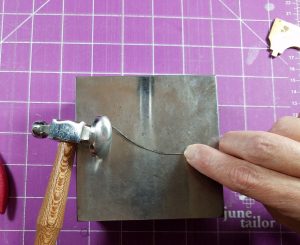
In the previous post on Solder Prep, we used the Chasing Hammer and the Steel Bench Block to flatten and thin out the Wire Solder to obtain the optimal size pieces of solder for our projects.
This task is just one example of moving the metal.
Let's take a Look at the Basic Tools
Hammers
Just like any other category of Jeweler’s Tools, these is a huge variety of Hammers and Brands out there to choose from.
Over time, you will add more hammers as you learn more intricate tasks.
For today we are going to focus on the basics.
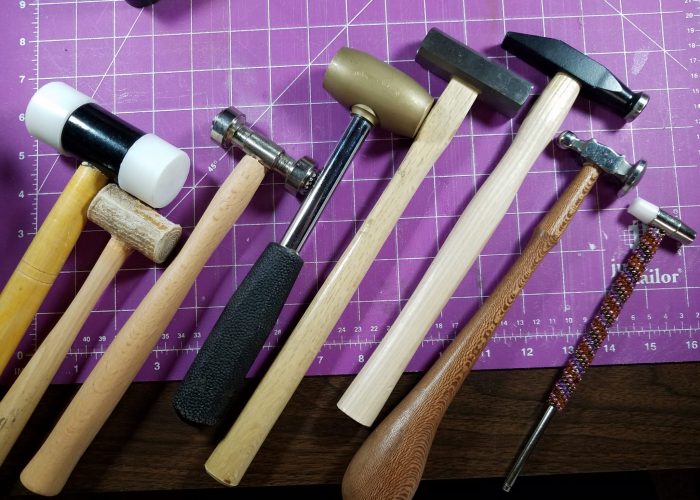
Chasing Hammer – a must even for beginners – used to flatten and harden metal.
You can thin out metals with this hammer too. (Second from the right.)
Uses – Making Paddle ends on wire for head pins or links, harden the curves of fishhook ear wires, prep your solder, and many other uses.
Brass Mallet – used to strike other metal forming and cutting tools, such as the disc cutters, metal stamping tools. Easy to recognize because the head is made of brass.
Rawhide Mallet and Nylon Hammers – are needed to help with metal forming tasks when you do not want to mark or reshape the metal. (Two on the Left.)
Examples include when you need to straighten or bend the wire without moving the metal out of shape.
These 3 types of Hammers will get your started and you will use them in nearly every metal working project.
Extras:
- Texture Hammer
- Riveting Hammer
- Ball Peen Hammer
Bench Blocks~Anvils~Mandrels
Now that you have a few hammers, you will need some surfaces to hammer upon.
These bad boys are the workhorses of Metal Forming.
There are a few more Key Concepts to think about when we talk about this category of tools.
The physics of metal forming are an important factor when choosing your surface to hammer on.
There are a few Concepts that will help you choose.
- Materials
- Desired Outcome
- Physical Properties
The 3 Materials involved in any hammering task are:
- The material you are hammering
- The materials the hammer is made of
- The materials your hammering surface is made from
For our purposes, the material to be hammered is a constant – Metal.
The Desired Outcome or Goal:
Straighten
Harden
Flatten or reshape
Physical Properties
Metal – Metal Hammer – Metal Surface:
Flatten, thin, harden and shape your piece. Use for texture, stamping, fold-forming, etc.
Metal – Non-metal Hammer – Metal Surface / Metal – Metal Hammer – Non-metal Surface:
Shape harden and straighten, can still flatten and thin the metal if you use a lot of force.
Metal – Non-metal Hammer – Non-metal Surface:
Great for straightening out wire and flattening out sheet, will not flatten or thing the metal, will not harden the metal very much.
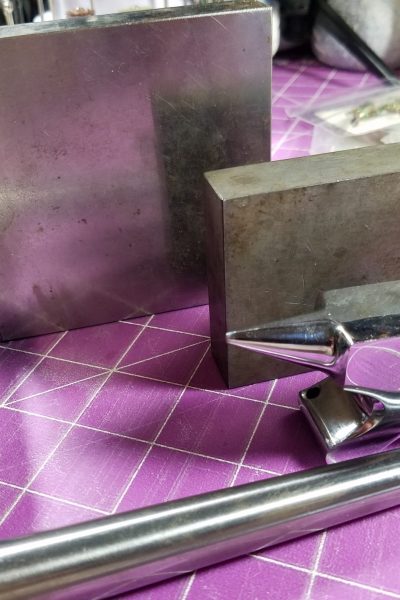
Steel Blocks, Anvils and Mandrels
←
→
Sandbags, Rubber and Plastic Surfaces
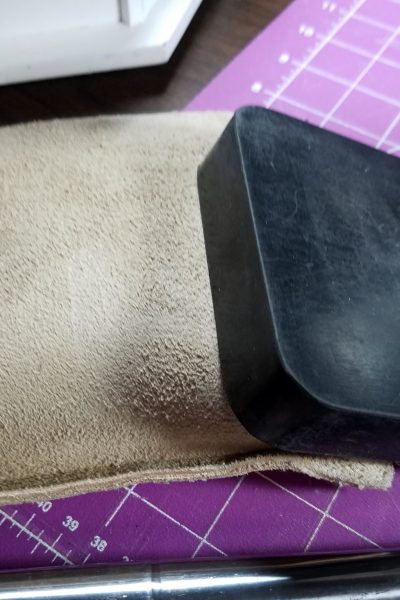
Dapping and Swage Tools
I am adding these items to Part 1 of Forming Tools because you have to use a hammer with these tools.
A Brass mallet is used along with these tools to spread the metal into different shapes and forms, like domes for example.
As you can see, I haven’t really invested deeply into this category but I have my eye on this Set and will hopefully have it by summer
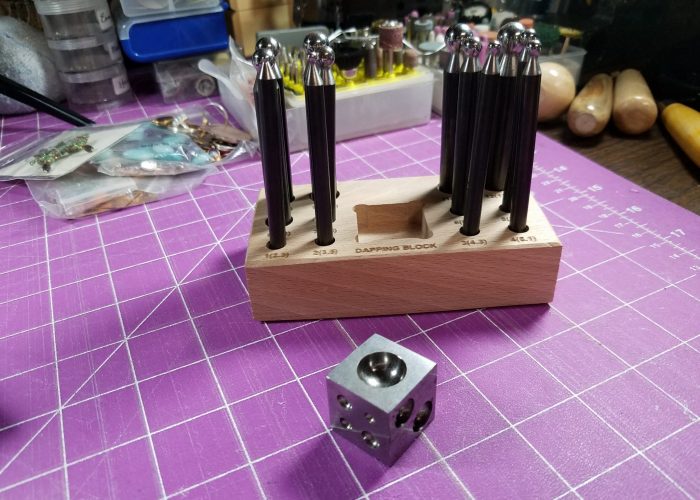
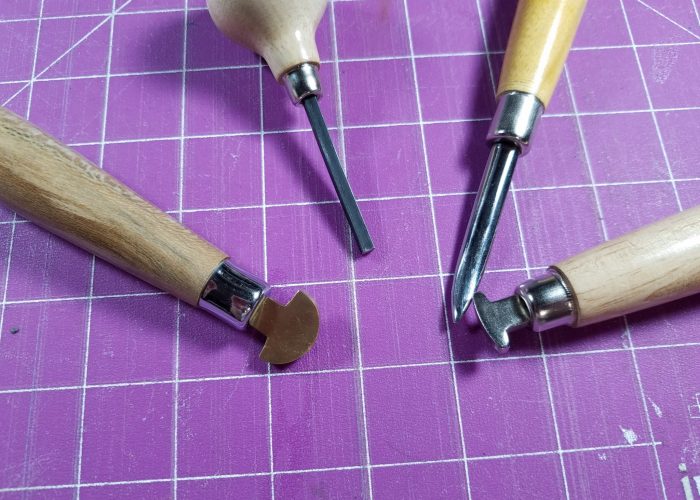
Bezel Rollers, Prong Pushers and Burnishers
These tools do not require the use of Hammers but are used to push and move metal for very specific tasks.
Bezel Rollers and Prong Pushers are used to move metal in stone settings.
Burnishers smooth and shine metal.
Non Metal Straightening Tools
Inexpensive Additions I recommend strongly if you plan to work with Jewelry Wire
- Nylon Jaw Pliers
- Wire Straightener
- Wooden Block

Clamps and Vices
These simple tools are very helpful when it comes to performing many of your metalsmithing tasks.
Used to hold your metal and works in progress while you work.
The few I have were not very expensive at all and worth every cent I spent on them.
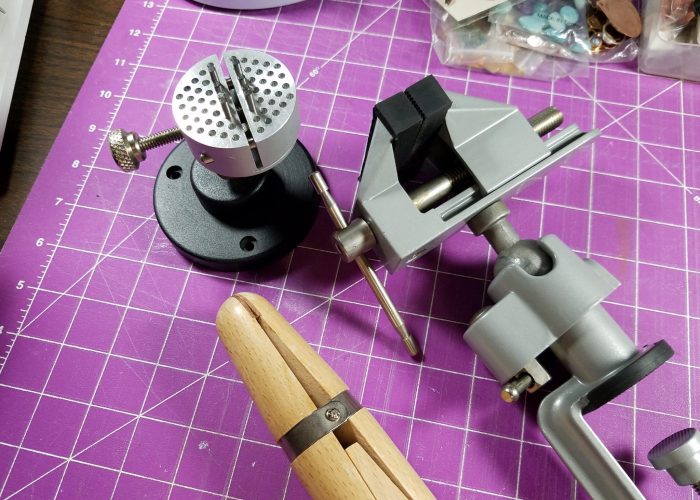
Simple Wooden Ring Clamp
Swivel Vice with Clamp and Rubber Guards to protect your metal
Bench Mount Work Holder – Adjustable with Positioning Pins
This brings us to the end of Part 1 of Basic Metal Forming Tools to a close.
We covered the tools you need to perform the most basic tasks used to make metal Jewelry.
In Part 2, I will explore a variety of Pliers and a few other inexpensive wire working tools.
We will go further into the discussion on Mandrels too.
I hope you found this post useful. Please feel free to leave a comment and to share it with your friends.
Don't Forget to Follow my Blog
Subscribe to The Bead Mat Newsletter
Check out my Series on Getting started with Soldering Jewelry at Home
